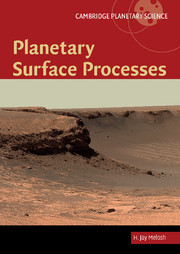4 - Tectonics
Published online by Cambridge University Press: 05 June 2012
Summary
Though the primary direction of the force which thus elevated them [the strata] must have been from below upwards, yet it has been so combined with the gravity and resistance of the mass to which it was applied, as to create a lateral and oblique thrust, and to produce those contortions of the strata, which, when on the great scale, are among the most striking and instructive phenomena of geology.
John Playfair, Illustrations of the Huttonian Theory of the Earth (1802, p. 45)What is tectonic deformation?
During NASA’s Mariner 10 spacecrafts first encounter with the planet Mercury on March 29, 1974, planetary scientists at both Caltech and JPL (the Jet Propulsion Laboratory in Pasadena, California) were initially disappointed by the Moon-like appearance of Mercury’s surface. They had hoped for something more exotic than a monotonous, gray, heavily cratered planetary landscape. But closer examination revealed a major difference: dozens of kilometer-high scarps wound hundreds of kilometers across the surface, cutting plains and craters alike. These “lobate scarps” indicated a planetary history quite distinct from that of our moon and implied that powerful compressive stresses fractured Mercury’s lithosphere sometime after the period of heavy meteorite bombardment.
Planetary surface features created by internal stresses that fracture or deform the lithosphere are collectively termed tectonic. Not all tectonic features are as dramatic as Mercury’s lobate scarps: subtle long-wavelength topographic warping is also classified as tectonic. On Earth, such warping was first recognized by changes in the position of the land and the sea. The word “tectonic” is derived from the Greek word for “builder” and has long been identified with the forces that produce mountains. Terrestrial geologists use this term to describe earth movements and constructional landforms not created by volcanism or impact.
- Type
- Chapter
- Information
- Planetary Surface Processes , pp. 104 - 168Publisher: Cambridge University PressPrint publication year: 2011

